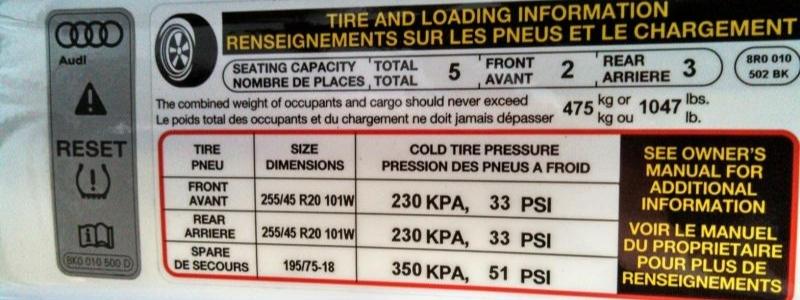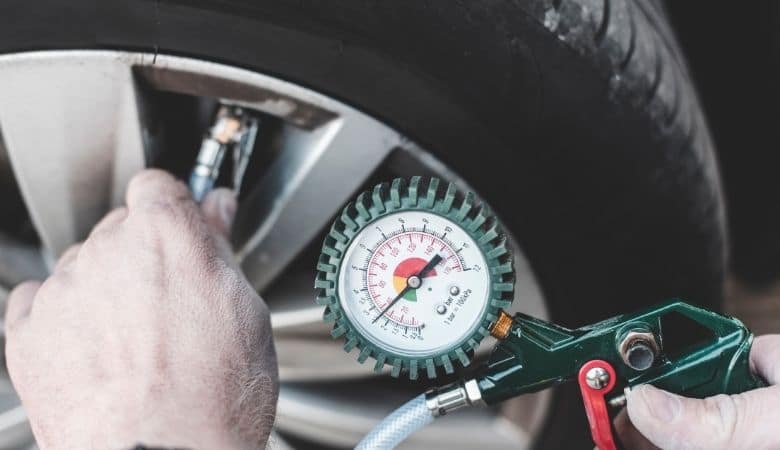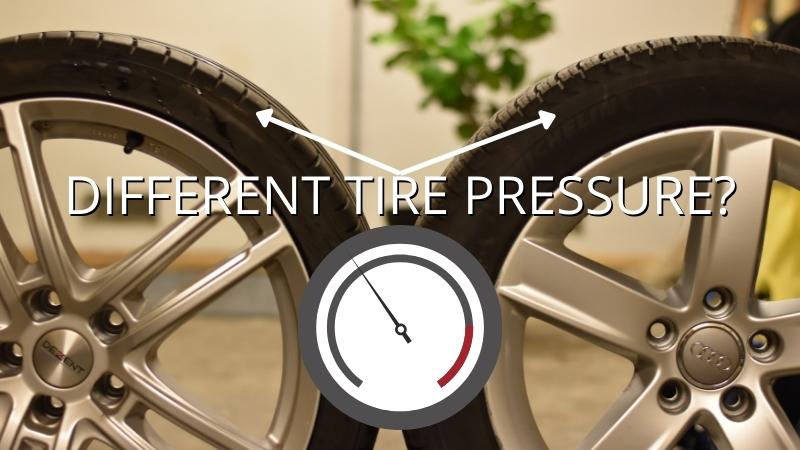If you are planning to change tires or you have just secured new tires, it is natural to be interested in how to determine the correct tire pressure for your car.
A different tire size can be fitted to replace the factory tire, but is your car intended to use the full air pressure capacity of your new tire? Do tire pressure recommendations change with different tire sizes?
Different tire sizes require different tire pressures because the size and pressure of the factory tire have been engineered specifically by the manufacturer for balancing ride quality, fuel efficiency, braking performance, and tread wear. Installing a different tire size without adjusting tire pressure will alter this dynamic and could cause drivability problems.
In this article, you will discover why tire pressure must change with tire size, how to discover the recommended tire pressure for your vehicle, and how to adjust tire pressure when fitting new tires.
Why Must Tire Pressure Change With Tire Size?
Keeping the correct air pressure in your tires will ensure longer tire life, quicker steering response, good gas mileage, and a much smoother ride than an improperly inflated tire.
The air pressure in your tires must adhere to the recommendations of the vehicle manufacturer to avoid handling issues, uncomfortable vibrations, and other problems. Fitting a larger tire does not negate the need to adjust your tire pressure to comply with the manufacturer’s recommendations.
The load capacity of your vehicle is directly related to the amount of air in the tires. Too little air will wear down your tires and reduce the load capacity of the vehicle below the engineered level.
Nevertheless, installing a larger tire with more air will not increase the load-carrying capacity of your vehicle—the level of tire pressure that your vehicle needs to safely carry a defined amount of weight will remain the same.
Vehicle manufacturers come up with the tire pressure recommendations through rigorous testing to determine the ideal tire pressures for balancing considerations of performance, safety, fuel efficiency, and longevity.
They test factors as complex as how much load a vehicle puts on its left front wheel during a right turn at 40mph, for example. This is why a vehicle can have different recommended tire pressure levels for front and rear tires.
How to Find The Recommended Tire Pressure for Your Vehicle
The fastest and easiest way to find the recommended tire pressure levels for your vehicle is to check the driver’s side door jamb of your car. You can also check for it in your owner’s manual.

Tire pressure is measured in PSI (pounds per square inch). In the United States, the maximum psi and maximum load levels of different tire sizes are set by car manufacturers according to the standards of the Tire and Rim Association (TRA).
Most car manufacturers recommend between 33-36 psi for passenger cars. These recommendations only apply to stock or stock-equivalent tires. The label on the driver side door jamb will specify the installed tire size, load range, load index number, and maximum pressure rating for the front and rear tires.
After checking for the psi of each tire, be sure to write down the recommended pressure levels to avoid getting confused as you move around your vehicle checking tire pressure.
Making Adjustments When Changing Tire Sizes
Changing tire sizes typically requires the new tire’s air pressure to be altered to more correctly fit the engineered load capacity of the original tire. To do this, you must first check the air pressure level of your new tire before adjusting it to the recommended PSI.
You will need the following to check and adjust tire pressure:
- Pen and paper
- Tire pressure gauge
- Flat-head screwdriver
- Air compressor
Here is how to go about it:
1. Always Start With Cold Tires
Your tire pressure is easily influenced by tire temperature. Driving for long distances will create a lot of heat in your tires which will cause tire pressure to increase. This is why you will often find “cold tire inflation pressure” on tire air pressure labels.
Tires are considered cold when given at least three hours to cool down or if the vehicle has only been driven for less than a mile at moderate speed. You can also decide to wait until morning before checking your tires.
You must also be aware that cold and hot weather can affect tire pressure. According to Goodyear, every 10-degree drop in temperature will cause your tires to drop 1-2 pounds of air pressure. Similarly, every 10-degree increase in temperature will cause your tires to add 1-2 pounds of air pressure.
2. Check Tire Pressure with Your Tire Pressure Gauge

Accuracy is very important when selecting a tire pressure gauge. For just a few dollars, you can easily get a quality pressure gauge at an auto parts store. A tire pressure gauge can be digital or standard, a digital pressure gauge guarantees accurate readings, but you must always remember to replace the battery.
To check tire pressure, remove the valve cap from your tire and place the pressure gauge on the valve stem. Press the gauge down hard enough until the hissing sound disappears. A digital gauge will show the reading on its screen, while a standard gauge will show the reading through the movement of the small bar out from the bottom of the gauge.
Write down the reading and compare the number with the tire pressure recommended by the car manufacturer.
If the tire is overinflated, you must release the excess air. To do this, place a flat-head screwdriver on top of the metal pin at the center of the valve stem and press inward. You should hear air escaping from the tire. Remove the screwdriver and gauge the air pressure again. Repeat the same process until you reach the recommended tire pressure level.
3. Fill to the Recommended Tire Pressure
This is only applicable if the air pressure level is lower than the recommended psi. You will need your air compressor at this stage.
You can choose to use a personal air compressor or the air compressor at a gas station. The process of operating air compressors is different depending on the type, and make sure you read the applicable instructions carefully before using the tool.
If you are using a personal air compressor, press the hose nozzle down on the valve stem, and you should notice air flowing in through the hose automatically. You may need to press a lever when operating some air compressors.
When you notice the tire inflating, remove the hose fitting, and check the air pressure. Keep filling the tire with air until it is inflated properly.
If you opt to use the air compressor at a gas station, park your vehicle close to the hose to ensure you can reach all four tires. Insert the change into the machine, place the end of the hose over the valve stem, and press on the lever. Replace the valve cap when you are done.
4. Gauge Tire Pressure Again
At this point, you may have overfilled your tires when filling them up with the air compressor causing overinflation. You must avoid overinflated tires since overinflation can lead to poor handling, decreased traction, and premature tire wear.
Let out the excess air until you release enough air to reach the correct air pressure. We recommend that you release smaller and smaller amounts of air as you near the correct air pressure. Replace the valve cap when you are done.
Is It Better to Have Over or Under the Recommended Tire Pressure?
We do not recommend inflating your tires above the maximum pressure the tire should hold. Rather, we would recommend filling your tire to just below the maximum tire pressure. For example, if the maximum tire pressure is 54 psi, you can safely fill the tire to about 50 psi.
You may come across some advice on the internet from wise guys suggesting you inflate your tires above the recommended pressure. This is bad advice.
When you fill your tire above the maximum pressure it can hold, you are actually reducing the portion of the tire in contact with the pavement. The lesser the contact patch, the less traction and stopping power you will have.
Want to learn what the signs of over-inflated or under-inflated tires are? Read this post next.
Conclusion
The bottom line is that your tires must comply with the recommended pressure whether you are using a different tire size or simply inflating your factory tire. You must also check your tire pressure monthly and each time you inflate your tire to ensure your tires never dip below the optimal psi.
Hi, my name is Niklas, the head content creator & CEO of Whirling Wheelz. I am very interested in vehicles of all kinds, mainly cars. I have a car mechanics degree from high school and a big hobby of mine is to follow the WRC (World Rally Championship) both online and through travel.



Excellent article; very helpful information.